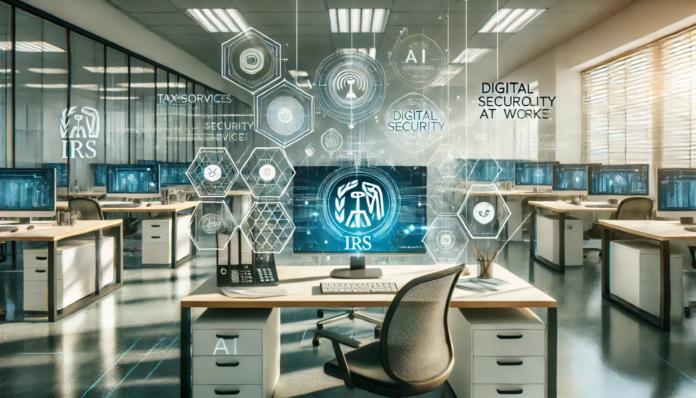IRS Implements New Technology To Enhance Online Services For Taxpayers
The IRS has implemented several technological innovations to better serve taxpayers in their online experience. This is part of a broader push to modernize the tax administration and enable taxpayers to access essential services, file taxes and manage their accounts online. By using cutting-edge tech, the IRS Updates hopes to “modernize” and better secure its processes while also making it faster and easier than ever for taxpayers.
In this article, we’ll examine the IRS’s recent steps, what its new technology entails, and how these changes will empower taxpayers to manage their taxes more effectively.
The IRS’s New Technology, Explained
The IRS has made a series of enhancements to its online systems. These technological innovations are expected to provide taxpayers with more efficient and reliable services and to improve the security and efficiency of tax administration. Here are the key highlights from these new tech upgrades:
- Better Online Portal: A simplified, faster process for accessing tax records, paying taxes, and monitoring refunds.
- Improvements to ID Verification: More sophisticated AI-based ID verification solutions will be deployed by organizations to improve taxpayer security in interacting with their accounts.
- However, AI integration: AI-enabled solutions that help users with FAQs and questions to help them navigate through the tax process on a step-by-step basis without requiring live help.
These improvements are all aimed at removing blocks that may stop prospective taxpayers from filing and making it easier to meet obligations when the time comes.
Bruiser Shot with the New Technology
You Have Faster And More Accessible tax Information
Our new online portal has vastly improved access to the core tax information. Taxpayers can receive tax papers, check the status of a reimbursement and pay in a few clicks. Designed with a straightforward interface allows most users with limited technical backgrounds to use it with ease.
It’s also accessible: Taxpayers can look up previous returns, verify their filing status and track refunds without being put on hold waiting for a representative.
Updated Tax Return status: Real-time tracking of tax return status including estimated time for a refund
More Protection for Taxpayers
The IRS has developed enhanced security protocols to protect taxpayer data that could be exposed in data breaches. This new technology rollout consists of a big part of multi-factor authentication and AI-driven identity verification systems. These safeguards are essential to preventing unauthorized access to sensitive taxpayer information.
Taxpayers Will Use Tax-based Two-factor Authentication: Taxpayers will verify themselves by providing a series of credentials, thus their accounts will be more secure.
AI-based Fraud Detection Solutions: Automated systems are being deployed to detect fraud and help keep tax-related data secure.
Artificial Intelligence-Powered Chat Bots To Help
Artificial intelligence is being used more to guide taxpayers through the systems of the IRS. The new AI-driven chatbots can assist users with frequently asked questions, such as checking the status of their refunds or guidance on filing taxes. These chatbots can be there 24/7, giving support to taxpayers at any time.
- Available 24/7: They can respond to regularly asked questions, and address simple problems to a limited degree without a human translator.
- Tax Filing Helper: AI tools help guide users through the process of filing their taxes, lowering the chance of mistakes and speeding up submission.
Impact on Taxpayers
Streamlined Filing Process
A major benefit of the new technology is the improved tax filing experience. The enhanced online portal now also allows taxpayers to file returns directly. Pre-filled information and simplified forms make filing faster, more accurate and less stressful.
Filling out forms will also be automated: Taxpayers will upload their financial documents in digital format and need to fill out their forms automatically with minimal human involvement which should help reduce error.
Minimized Errors: Since AI can auto-fill information, the tax filing process is much more durable against mistakes.
Faster Refund Processing
With the new system, taxpayers also will get their refunds more quickly. But because AI will do much of the data processing, refunds can be processed more quickly. In many cases, taxpayers will receive their refunds in a much faster timeframe than previously.
- Faster Refunds: Payment Automation allows refunds to be processed and issued faster than ever, avoiding any delays.
- Real-Time Status Updates: Taxpayers will be able to check the status of their refunds in real-time with the new portal.
Better communication With The Irs
New technology also enhances communication between taxpayers and the IRS. Providing more robust online self-service tools helps taxpayers resolve common issues and obtain information at their convenience, instead of waiting on hold for long periods.
But for more than basic problems, besides calling the IRS, taxpayers can also live chat with IRS representatives.
Now, the IRS has added better use of email support that allows for better handling of responses so it shows the ability to follow-up and follow >>> points of contact for responsive questions.
What’s In Store For Irs Online Services?
The I.R.S. has long been modernizing its technology and online services. Later updates could bolster even stronger AI functionality, deliver real-time updates on any and all tax-related services, and add more mobile-friendly features for on-the-go filers. Here’s a rundown of what taxpayers should expect next:
Blockchain technology — Some potential tax authorities are looking at blockchain technology because it is secure and transparent, making it suitable for tax reporting and payment processing.
A mobile app will be introduced as part of this initiative to enable taxpayers to operate their accounts and access services on their mobile phones.
Breathing New Life into Chatbots:160; AI-enriched chatbots will be trained to provide assistance with more complex questions, assisting to reduce the need to contact customer service.
FAQ Section
What’s new in the IRS online services?
They should help improve service, including a new online portal to get tax records, AI-based identity verification and self-service chatbots to answer frequent inquiries or give filing advice.
What gives the IRS security in its new system?
Features such as multi-factor authentication and AI-powered fraud detection in this new technology by the IRS help in securing taxpayer data and preventing unauthorized access as based on usage, the IRS may issue you another six new IRS access codes, each of them assigned for making different types of transactions.
Can I file my taxes online with the new IRS system?
That’s right, taxpayers can now file their taxes using a web portal provided by the IRS with forms pre-filled by the IRS and AI helping them.
Does the new tech enable the IRS to process refunds more quickly?
Yes, the new IRS system is meant to speed up the processing of refunds by using automated systems. Because of this, taxpayers can expect their refunds to arrive even sooner than in the past.
Conclusion
And it’s all part of a massive push to modernize tax services using the IRS’ new tech. In addition, these updates will deliver a streamlined experience for taxpayers along with advanced online tools, better security features, and quicker processing time for all outbound correspondence.
Taxpayers should also prepare for a more efficient and taxpayer-friendly experience now and in the future as the IRS continues to expand its online offerings to better serve Americans in managing their taxes. Disclaimer: But for accurate information, the IRS website.
Related Article: Top 10 Fashion Trends To Watch This Year










